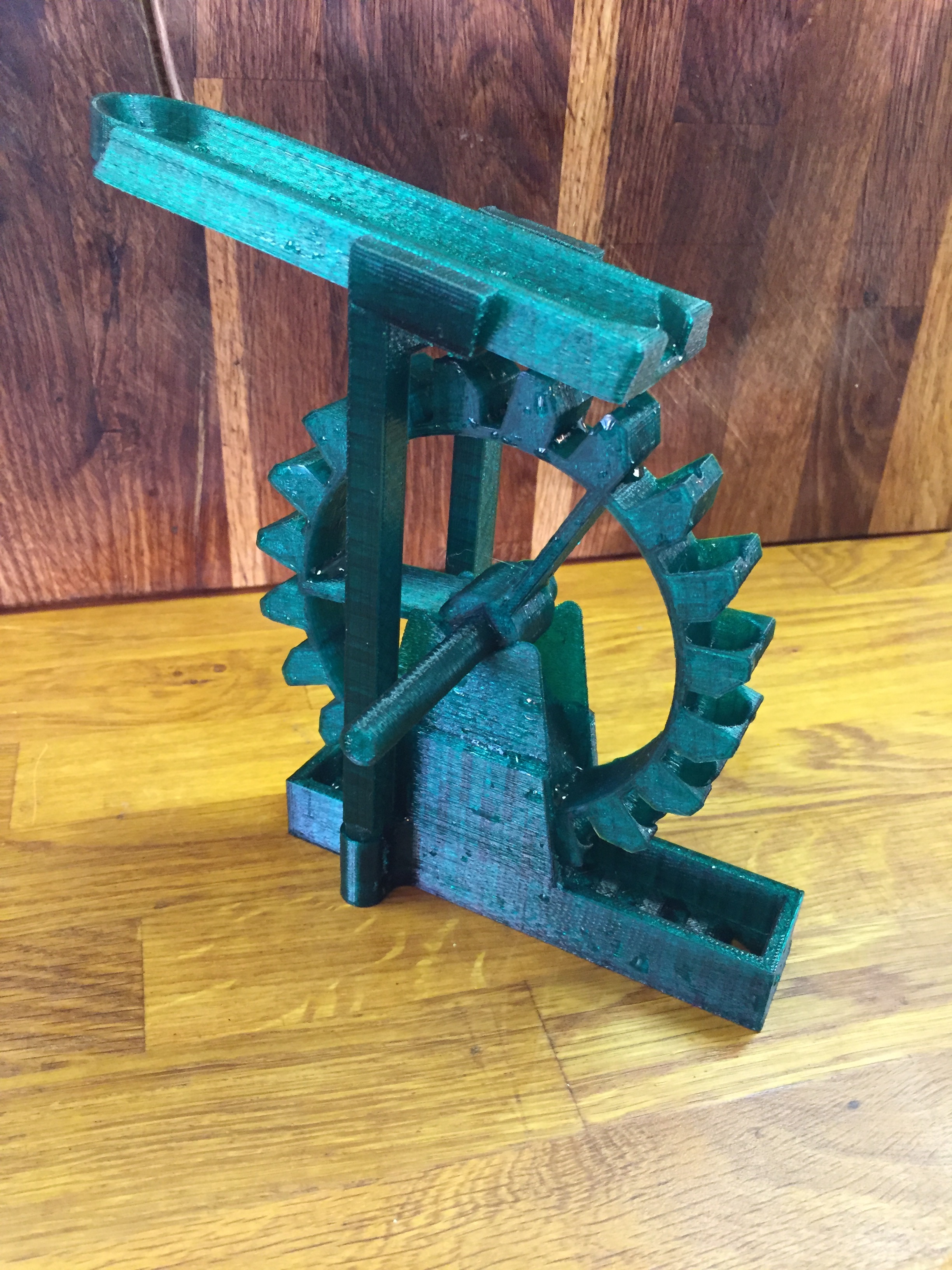
Education working Overshot water wheel
myminifactory
Human: This model of an overshot water wheel features a long driven axe that can be used for various workloads and an adjustable mill race allowing you to discover how changing its position affects the wheel's performance. How do water wheels operate? Example of an 'overshot' water wheel Water wheels consist of large wooden or metal wheels with paddles or buckets arranged around their outside rims. The force and weight of the water on these paddles or buckets turn the wheel. As the axle turns, it drives machines using belts or gears. The flowing channel of water is called a mill race. Water from the mill pond enters the wheel through the head race, while excess water exits via the tail race. Overshot water wheels In an overshot water wheel, the mill race brings water to the top of the wheel, where it strikes paddles or buckets and turns the wheel efficiently. This design utilizes both the force of flowing water and the weight of falling water to turn the wheel. Sometimes, only one rim of the wheel has mounted buckets, filling with water and making that side heavier. Because it harnesses the potential energy of falling water, an overshot water wheel can still operate even at low water flow rates. The larger the diameter of the wheel, the greater leverage and turning effect on the axle driving the machine.
With this file you will be able to print Education working Overshot water wheel with your 3D printer. Click on the button and save the file on your computer to work, edit or customize your design. You can also find more 3D designs for printers on Education working Overshot water wheel.
